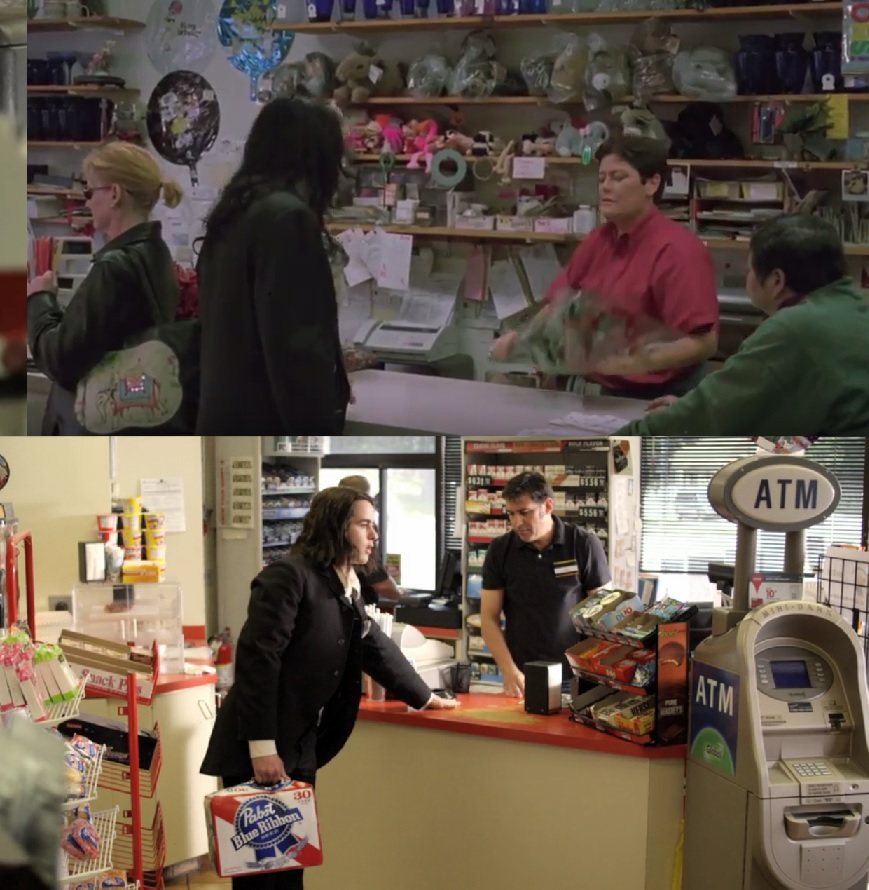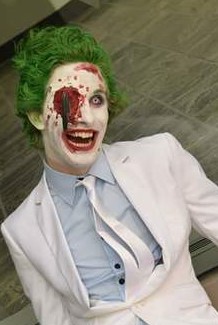As I teenager, I was into punk. More accurately, I thought I was into punk, though I was probably into a dozen related things, most of them more mainstream for real punk culture and that would be called a myriad of childish names by people who considered themselves real punks. However, I lived in a small town with a population of a few thousand, so there were few people to contest that claim. Because of this, I took the 1998 film SLC Punk as a truth about punk culture. It’s various pauses in story to drop scenes of punk history were either affirming for information I thought I already knew or informational about things I couldn’t find elsewhere. Mind you, this was early in the Internet age for a teenager. Social media was non-existent, Google was effectively an idea of the future, and information was limited to 56k. In other words, what I knew of punk came from word of mouth, the local library, and this movie. With that in mind, I also refuse to rewatch it even for the sake of context for this article, because it will probably make me feel like an idiot. I view this movie with tinted lenses, and I remember it fondly. It seemed like a compelling story about real characters who resembled much of what I knew punk culture to be: flawed, anxious, and ultimately self-destructive. No real punk stayed that way. The sequel, released recently to Netflix, suggests that the Internet would have made that film both painful and irrelevant. I also can’t make up how terrible the dialogue is.
Before you continue past the jump, there will be spoilers in the rest of this review. So if you haven’t seen Punk’s Dead: SLC Punk 2 and you don’t want spoilers, stop now, queue up your Netflix, and then join me later.

While it seems to have had some interest in it’s initial release based on the number of Indiegogo contributors listed in the credits, my only knowledge of SLC Punk 2 came from it being recommended on Netflix. Apparently, Netflix knows I love bad cinema. This film may be the newest and one of the strongest additions to the “So Bad It’s Good” genre of B movies.
The film starts with some brief introduction to a main character near the end of the story. We see our hero, Ross, being beaten up at a punk show. Ross would be best described as a teenage boy who read about Nick Cave on a Wiki but never heard any of the associated music. He is established as “too straight edge for the straight edge kids,” and then promptly spends the entirety of the film drunk and on mushrooms. For how subversive the film treats the character, refusing to let any other character accurately give him a classification of subculture, Hot Topic had been around for 17 years in 2005, when this film is set, and he looks to have taken most of his visual and character traits from the 2005 sale section. He’s blocky and stiff in appearance, always wears a sport coat, spends his film conflicted and romantically broken. Seem familiar?
The film is narrated by the character’s father, Heroine Bob, who died in the original movie. This isn’t a cameo. Bob is a solid 20% of the film, narrating, directing the audience’s understanding of the scenes, and doing the punk history that Matthew Lillard’s character did in the original, speaking directly to the camera. What I remember as a character from my teens seems to me now more of a Quentin Tarantino impression, with the strange, eager excitement of a teenage boy jammed into a man’s ability to convey them. Bob tells us that his son, a unique white rose of independence, is heartbroken and his mother has no idea where he is. That’s basically the entire film. His way of explaining this is by describing his son the way a LiveJournal profile might describe it’s author. Another descriptor might be “stilted.” This could be said for most of the adult actors in the film, who are returning cast of the 1998 SLC Punk film. I am somewhat confident in that all of these people are decent at their craft, but this movie does it’s best to be certain to undermine those capabilities. Camera angles seem more forced, as if the director was limited to long scenes in wide shots and close-ups, dialogue does it’s best to emulate Clerks, and the characters are reduced to even more finite cardboard cutouts of what they were before. There’s a woman who runs a steampunk shop, a man who runs a black metal shop, a junkie everyone thought was dead, and a guy who essentially runs Suicide Girls. This is 2005, so I can believe a steampunk shop and Suicide Girls being both new and thriving (despite no customers coming into the shop over the course of the film), but a black metal shop? Is this an RPG game? How can a shop that only appears to sell guitar amps, pointy guitars, and swords survive, even pre-economic crisis?
This also brings us to one of my favorite scenes, and one that seems to misunderstand story writing, character, and law. Ross, heartbroken and riding with his friends, demands more beer. He stops at a gas station, grabs a 30 pack, and pays the man at the register with a $20, telling him to keep the change. As he exits, the cashier asks if he has ID. He replies, “yes,” the cashier shrugs, and the scene is over. There are so many similarities to The Room’s flower shop exchange that all this gas station needs is a doggie. The cashier definitely seems like an actual cashier they roped into saying a line and this situation wouldn’t happen even in a teenager’s dreams.

SLC Punk 2 spends most of it’s time padding out runtime with dialogue that doesn’t matter to the story and hopping from the three teenager characters driving to a punk show and a myriad of Bob’s friends from before he OD’d gathering together to support his baby momma and help her find her son. The film seems to depict a group of men who have watched over Ross as a child in the absence of a father, rebellious boys grown into supportive men caring for a child in need. However, they all also seem surprised by the existence of the others in the young man’s life, if not entirely unfamiliar with each other since Bob’s death. How do a group of people all working to help raise this kid not run into each other in a decade or two?
In keeping with the style of the first SLC Punk, there are scenes in which the narration jumps in to allow Bob to explain punk culture. While the original film seemed creative and fun, giving these scenes a childish style that matched the theme, this one simply seems to be weak in it’s ability to edit, relying on cheap Adobe presets and reusing several of it’s quirky images, in particular a shark biting something. Similar strange editing choices, namely scenes with glaring ADR and jump cuts to attempt to put a band-aid over mistakes, make some of the second act difficult to watch, even for a movie watched for the sake of being so bad it’s humorous. I’m not sure if style has changed so much as to make this seem amateur after time or if the crew on this film simply wasn’t as good at shooting and editing as the original.
The other most striking scene, no pun intended, is the one moment of weight that is attempted with these characters. Ross’s friend Penny, who I haven’t mentioned prior because she does little up to this point but drive the car, stops to speak to her father. He aggressively remarks about where she has been, asking if she’s been “slutting around with her faggot friends.” Riddle me that logic, to which she quietly says, “yes.” He then punches her in the face. She responds by taking Ross’ cane and beating the father’s windshield. For a man so abusive as to beat his child, he doesn’t do anything to stop her but shout, and she flees to her car, telling him he can “jerk himself off.” We are faced with child and sexual abuse and then immediately removed from any responsibility for that issue. It isn’t brought up again, and outside of Ross trying to get her to date him, she isn’t given much screen time after. She is the Denny of SLC Punk 2.
The movie ends with a punk show, which seems to be the film’s main interest. According to IMDB, it was funded by Indiegogo donations and attended by more than 2000 fans. Ross storms the stage to insult punk in general, he gets beat up, and the adults save him. Everyone is happy and the story ends. As a whole, this movie seems to want to emulate the style of a film made prior to the common use of digital editing and film, which makes it’s cheap imagery seem less charming and more like a YouTube channel. The movie overuses and abuses punk songs, and if you turn on the subtitles, the songs frequently give the singer of the band a credit. Maybe it’s a cultural difference, but in a world where information is so available, referential films seem more painful and less entertaining than they would have in the late 90s. Rather than feeling like you’re in on the knowledge this film offers of a subculture, it feels like you’re having something explained to you that most people already know. When you pair that kind of awkward over-explanation with strange performances, clunky writing, and culture that is more eye-roll worthy than interesting, you’re getting a movie that feels like a live action version of the “My Immortal” fan fiction.
Have you seen Punk’s Dead: SLC Punk 2? Let me know your thoughts in the comments!
Originally posted at HeroesPodcasts.com


